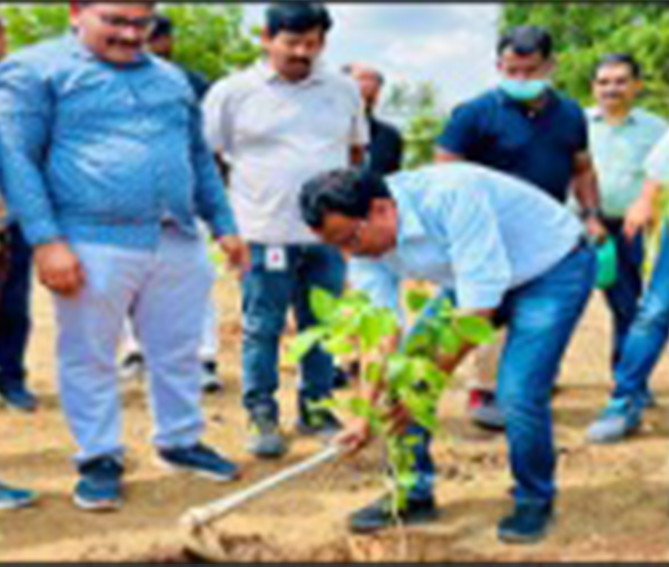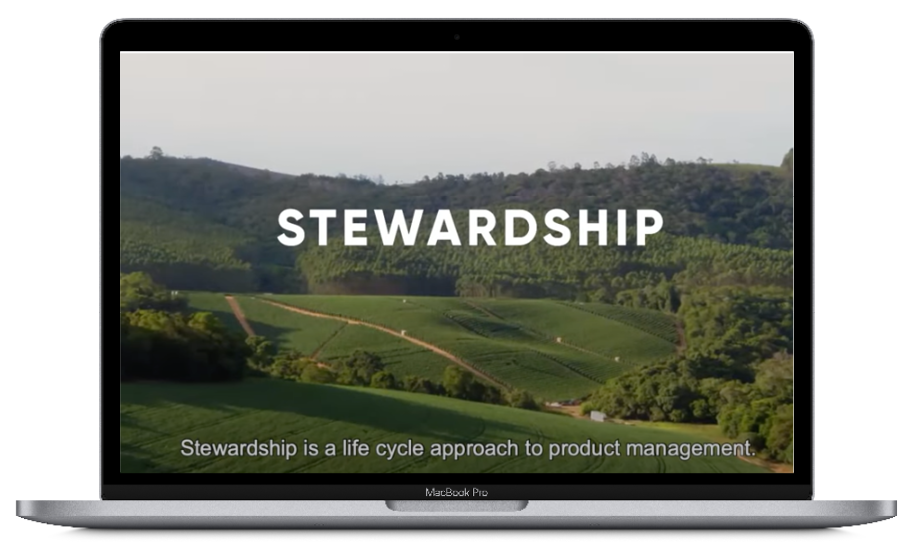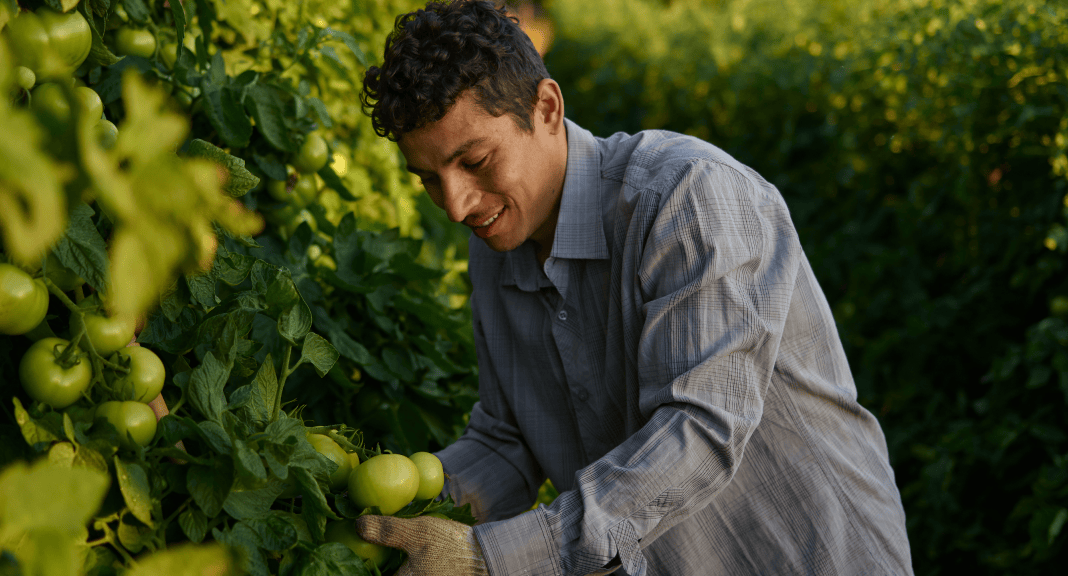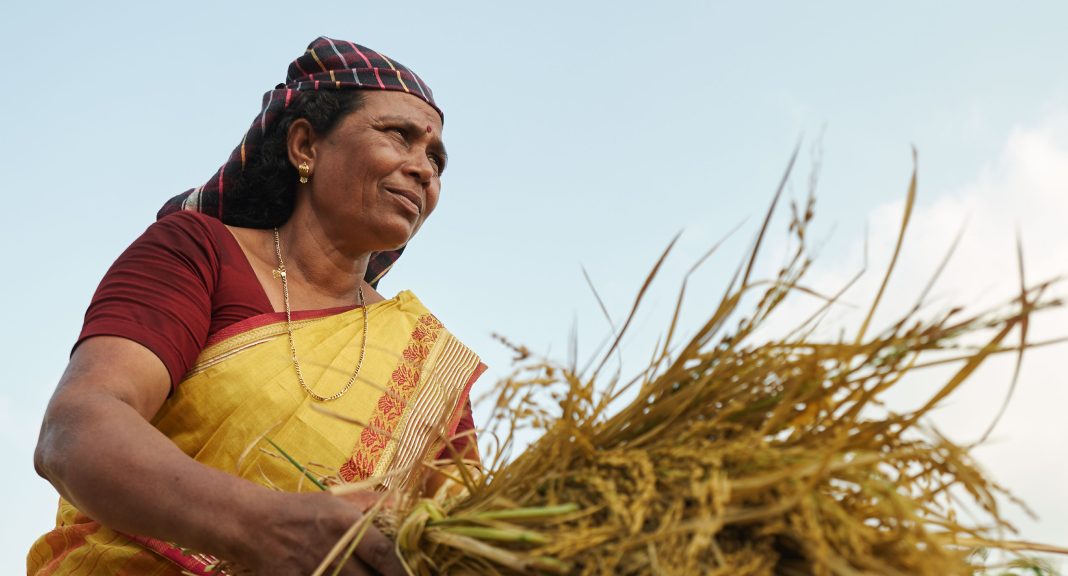Product stewardship governance and risk oversight
Applying sustainable innovation criteria aligned to the UN SDGs throughout the innovation process allows us to ensure that the technologies in our pipeline are continuously raising the bar as we strive to bring the leading sustainable solutions to farmers. This enables us to go above and beyond global regulatory requirements. We also have internal decision criteria and processes, informed by lab and field testing, predictive assays, and models, that need to be achieved before designating a product as a sustainable innovation. These practices allow us to stop development of a technology that we learn won’t meet stated criteria for safe and sustainable design.
Product stewardship
We employ strong governance and process rigor to accelerate productivity, differentiation, and sustainable outcomes through product stewardship, including training for product use. Process rigor extends to each stage of product life, from pre-development to development and advancement, to launch engine, to post-launch monitoring. This results in differentiated efficacy, durability, and ability to help sustainably enhance customer productivity.
Our stringent safety standards, and those of regulatory bodies around the world, help ensure that our products contribute to the delivery of safe and reliable food and also support efforts to protect the environment. Internally, a unique and proactive approach is our industry-leading Predictive Safety Center, which helps design crop protection products with environmental factors in mind as part of the product development process. We contribute to sustainable practices by complying with all applicable environmental laws and Company policies.
Externally, we are aligned to the United Nations Food and Agriculture Organization’s International Code of Conduct on Pesticide Management and Excellence Through Stewardship Plant Breeding Innovations Management Program and the Center for Food Integrity’s Responsible Use Guidelines. Corteva is committed to having its product innovations follow registrations, labeling and stewardship requirements in accordance with local laws.
Our crop protection and seed solutions containing biotechnology are closely regulated worldwide, with safety reviews and authorizations completed by individual countries. Periodic reviews and safety monitoring by regulatory authorities may also be completed. Products must meet or exceed stringent human health and environmental risk assessments for their intended use. We use externally recognized methods to test our technologies, including meta- analysis, laboratory and field studies, and local on-farm testing.
As an example, all growers, applicators, retailers, and seed sellers are encouraged to take advantage of our Enlist® weed control training system. This training helps users make compliant and effective applications of our Enlist herbicides.
Predictive safety
Our industry-leading Predictive Safety Center uses a variety of technologies to predict if a product will be safe throughout its lifecycle. This evolution from reactive to proactive to predictive includes considering the balance between biological efficacy and favorable human health and environmental safety profiles. The center has three aims:
Design solutions to enrich the lives of growers and customers.
Optimize and prioritize R&D investments by predicting downstream challenges.
De-risk and maximize the probability of safety and regulatory success for the pipeline.
A combination of in silico models and in vitro assays are used to screen molecules and assess their safety at earlier stages in the discovery process. The endpoints for a safety assessment cover different disciplines across the areas of human health and environmental safety, including mammalian toxicology, ecotoxicology, environmental fate and metabolism, and exposure.
Customer information and labeling
We work to provide customer access to accurate and adequate information on the economic, environmental, and social benefits and impacts of products and services. We comply with and, in some cases, strive to exceed the labeling requirements required to register and sell products locally. Internal and external review processes help monitor that labeling procedures are followed. Our labels, safety data sheets, and product use guides are available online. See more about regulatory considerations driving the requirements for our product safety and labeling in our Annual report and our Regulatory data transparency website.
Driving responsible crop protection use: sustainable practices in action
Our India Seed Operations team has been the driving force behind our Responsible Crop Protection Use campaign, a long-standing initiative aimed at mitigating the environmental impacts of crop protection use and disposal. This program engages over 20,000 farmers across 30 production sites in eight states, providing education and resources to improve practices in crop protection storage, usage, and safe disposal. A key component of the initiative is the implementation of Extended Producer Responsibility (EPR) programs to recycle used crop protection containers, reducing plastic waste and promoting circularity. Significant outcomes achieved through this campaign include the complete elimination of red label chemicals in seed production operations, the recycling of 875 metric tons of plastic crop protection containers, and the planting of 350 saplings with the distribution of an additional 800 to local communities. These results demonstrate how our India Seed Operations team has actively addressed nature-related impacts while fostering stakeholder collaboration across the value chain to support more sustainable agricultural practices.



Stewardship at Corteva
Gene editing
Plant breeding is one of the cornerstones of improved agricultural productivity and sustainable food production. As a breeding tool, gene editing holds tremendous promise to allow seed companies to develop or improve plants with the ability to:
- Produce higher yields, reducing the need for more agricultural land
- Require fewer applications of crop protection
- Withstand harsh environmental conditions such as droughts
Collaboration to advance shared goals
Through our collaborations with CGIAR, the Gates Foundation, and others, we are leveraging our technologies and scientists to bring sustainable innovations to smallholder farmers globally. These farmers, specifically, are facing some of the greatest pest, disease, and climate challenges.
Together, we are advancing new crop varieties to boost farmers’ access to innovative solutions. These efforts focus on essential crops for the most food-insecure regions, addressing key challenges for smallholder farmers. Through these innovations, we are addressing the need for scientific approaches to efficiently increase productivity and sustainability, alleviating the intense time and physical labor demands required from farmers.
For example, maize lethal necrosis (MLN) is a viral disease that severely reduces grain yield for smallholder farmers. We, along with partners from the International Maize and Wheat Improvement Center (CIMMYT), Kenya Agricultural and Livestock Research Organization (KALRO), USDA and the Seed Trade Association of Kenya (STAK), with funding by the Gates Foundation, are using genome editing to develop MLN-tolerant, locally adapted germplasm. After disease and yield testing is completed, this new germplasm will be released to seed companies in Kenya for the benefit of local farmers and regional food-insecure communities.
As another example, Striga is a parasitic weed that targets the roots of sorghum plants, dramatically impacting yield for this major food staple in West Africa. Alongside Kenyatta University, the International Service for the Acquisition of Agri-biotech Applications (ISAAA), African Agricultural Technology Foundation (AATF), and other partners, we are applying gene editing techniques to create a Striga-resistant "smart" sorghum that hinders the host connection by preventing Striga germination and parasitism. By measurably reducing Striga infection, farmers will see productivity increases and be better equipped to meet the food consumption needs of millions of people in this arid region.
Framework for responsible use of gene editing in agriculture
Corteva is proud to be one of six founding members of the Plant Breeding Innovation Management Program (PBI MP), a new initiative designed to promote transparency and stewardship in agricultural innovation. This program sets a global standard for responsible management practices, helping to accelerate market access for technologies that benefit farmers, consumers, and the environment. Importantly, the PBI MP provides an avenue for developers like Corteva to engage with society, addressing questions and fostering understanding around the opportunities and benefits of these advancements. The guidelines are free to university researchers and academics, giving broad accessibility and consistency in developing transformative agricultural solutions.
The PBI MP principles build on our existing commitment to the Framework for Responsible Use of Gene Editing in Agriculture. This multi-stakeholder initiative, supported by leading organizations like BIO, Cargill, PepsiCo, and Costco, promotes responsible and transparent use of gene editing technologies in the food system. Developed through collaboration with food companies, academia, civil society, farmers, and associations, the framework has been endorsed by leaders across the agriculture and food sectors to foster global acceptance of these innovative tools.
By adhering to these principles, Corteva aims to build trust and understanding among regulators, society, and key stakeholders. We are dedicated to producing new technologies that are not only developed responsibly but also recognized for their potential to address the challenges of feeding a growing global population. Through these efforts, we hope to pave the way for the continued development of crops that meet the evolving needs of farmers and contribute to a sustainable future.
↗ Learn more about the framework and the use of gene editing





